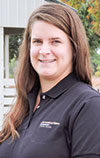As we lean toward raising more profitable cattle in the feedlot, it is equally important to consider the true “carcass” quality of mother cows.
In today’s cattle market, the necessity of having marbling in your cow herd is more important than ever. Remember, half of your calves’ genetic potential is coming from the mother, which can have a huge influence on the quality of the calves produced, even if they are sired by a bull with good carcass traits.
With this in mind, the question might be raised: How do I know if I have desirable marbling genetics in my cow herd?
An easy way to answer that question would be to keep track of your calves and determine how they perform on the rail. The estimated grading percentage for cattle slaughtered in the West is 11% Prime, 76% Choice and 10% Select (March 23, 2020, USDA Market News). If your calves are performing at or above those marks, it’s safe to say your herd has marbling.
Another avenue of determining the marbling ability of your cow base would be to ensure your replacement heifers carry the same high-marbling traits. If you’re using your own heifers for replacement and keep EPDs on your bulls, you should be able to know what potential for marbling your heifers might have. With the advancements and accuracy of today’s EPDs, and genetic information you can obtain before purchasing a cow or bull, there is plenty of opportunity to know the genetic base of your cow herd. Other options would be to take DNA samples of your heifers and have them analyzed for appropriate carcass characteristics using genomic testing. These results can also give you more information on the genetic potential of your cow herd.
Finally, many seedstock producers utilize ultrasound to determine the percent intramuscular fat, ribeye area and backfat. Knowing this data helps them make educated selection decisions that best fit their program. Commercial producers can use this same technology to make decisions on what heifers to use as replacements.
Young seedstock should have this data collected around 1 year old but may differ based on the breed association recommendations. Using this data, it can help ensure the heifers you are using to build your herd will give you the carcass quality you are looking for. Pair that with a high-marbling bull, and you should be able to produce calves with the genetic potential to meet consumers’ demand for profitable, high-quality, palatable beef. ![]()

-
Carmen Willmore
- Extension Educator
- University of Idaho Extension – Lincoln County
- Email Carmen Willmore








